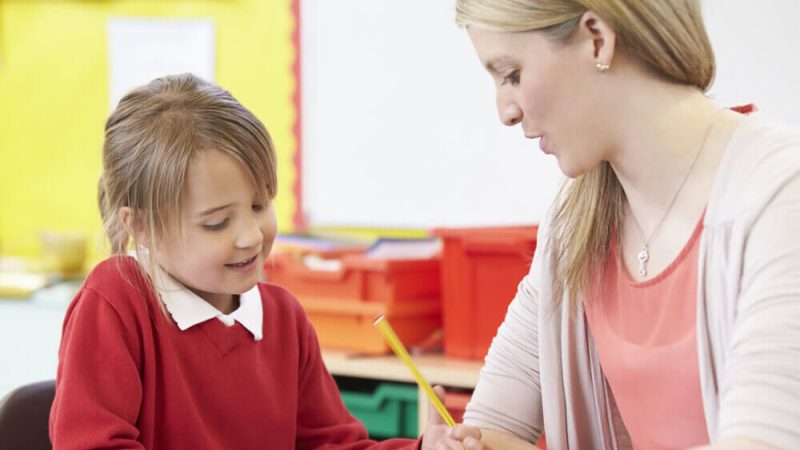Use Funny Fiction to Engage Reluctant Readers in Primary School

The promise of a laugh can tempt all children to try another chapter, says author Jo Simmons…
- by Jo Simmons

Walking home from school a few years ago, when my son was about 10 years old, he asked how I met his dad. And then answered his own question. “Was it two lonely people, who came together because they couldn’t find anyone else?”
That made me laugh. (It wasn’t quite like that, by the way.) But then, he makes me laugh every day.
I love his made-up character Mr Pizz Pazz, who runs a cheese workshop; the way he often says “What now?” when I wake him in the morning; his love of the word ‘succulent’; the way he winds up his granny by asking her, every time he visits, if he can put a grape in the microwave. (It’s a no from her.)
He’s funny, but so are all children; wonderfully funny, and also eager to laugh. On average, children laugh between 300 and 400 times a day. Adults, meanwhile, manage just 15 times.
This makes children a willing audience for funny fiction. The promise of a laugh between the pages of a book can tempt even reluctant readers to try another chapter.
In fact, faced with a reluctant reader – and my youngest son is that – I’d always reach for a funny book over a ‘good’ or exciting one.
Puppy peril
Don’t underestimate the appeal of funny fiction to reluctant parents, either. We all know the value of a bedtime story, but after a hard day at work, how many of us want to wade through three chapters of earnest adventure or puppy peril?
Share a funny story, though, and it’s a truly joyful thing: laughing together, reading in silly voices, glorying in the ridiculous set-ups and eccentric characters. It feels liberating, exciting, even slightly anarchic.
The worth of funny fiction goes beyond its ability to tempt in readers and entertain. A good funny story can educate in just the same way as a more serious tale does, delivering truths and addressing issues that affect children.
I’ve always been careful to write stories about things that really matter to children, and hopefully have not let the crazy situations and daft jokes get in the way of the story.
It means that wrapped up in the quirky characters and unlikely plot twists are real issues: friendship problems; anxiety about change; fear of the dark; the misery of being inferior in age and privileges to an older sibling; the frustration of being heard but not listened to.
Funny stories can shine a light on story writing itself, too, just as well as more serious works. Good funny fiction is still fiction, after all, with characterisation, narrative development, themes, problems and solutions.
It means that, as a teaching resource, a funny children’s book is just as valuable as any other.
Children can look at how the characters are drawn, spot the problem and see how the protagonist solves it, think about the story’s beginning, middle and end, and identify the emotions it excites, beyond simply laughing.
Enormous fun
Another great joy of funny fiction is that it’s an excellent building block for creative writing. How do you make funny fiction after all? In my experience, it’s by drawing funny characters, making them say funny things and placing them in funny situations.
When thinking about creating amusing characters, you can really let your imagination fly – something children don’t tend to struggle with.
In my books, I’ve had an old woman with a dramatic twitch who steals cats, a pensioner with a shady past on a pimped-up mobility scooter, the ghost of Henry VIII, a merboy and a child who thinks he’s a meerkat. This isn’t realistic fiction, after all.
It’s meant to be funny; it’s supposed to amuse, liberate and inspire kids. The characters don’t have to be realistic, but they do have to be entertaining, compelling and just a little bit different.
I tend to build my characters up quite simply, too, giving them perhaps three or four defining characteristics. One will be to do with how the character looks (height, mannerisms, dress), another with how he or she behaves and the third around how he or she speaks.
Kids can easily grasp this layering technique when creating their own fictional characters and I’ve had enormous fun when visiting school creating characters in this way.
Giving a character little linguistic ticks or catchphrases is another wonderful way to bring them to life and I’ve often used that approach when drawing characters for funny fiction.
Unique speech patterns or favourite words help define a character, so they exist through what they say as much as through how they look and act. Children are often really good at creating favourite words or exclamations for their characters.
The way they use language can be extremely inventive and loose, and making up silly turns of phrase and exclamations is an enjoyable workout for their creativity, leading to hilarious results that really bring their story writing to life.
Visual storyboarding
Finally, putting those characters into weird or outlandish situations is my final approach to creating amusing stories.
While a humorous work of fiction for adults can rely on witty ideas and dialogue, in a children’s story it’s essential to think visually, storyboarding the narrative as a filmmaker might, with plenty of silly situations.
In illustrated children’s fiction, these are the moments that are picked out and drawn, adding the visual icing to the fictional cake and, hopefully, helping a funny world come yet more vividly to life.
So that’s the case for funny fiction, how it can entertain but also educate, tap into a child’s real feelings while flying in the face or reality and giving wings to their imagination.
It’s a great inspiration for creative writing – look kids, you can write this kind of mad nonsense! Go for it! And if the warm-hearted joy and silliness of a humorous book can persuade a reluctant reader to turn the page, then it’s more than just fun. It’s valuable, too.










